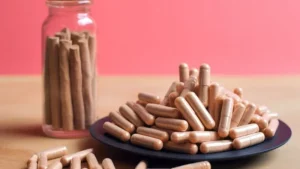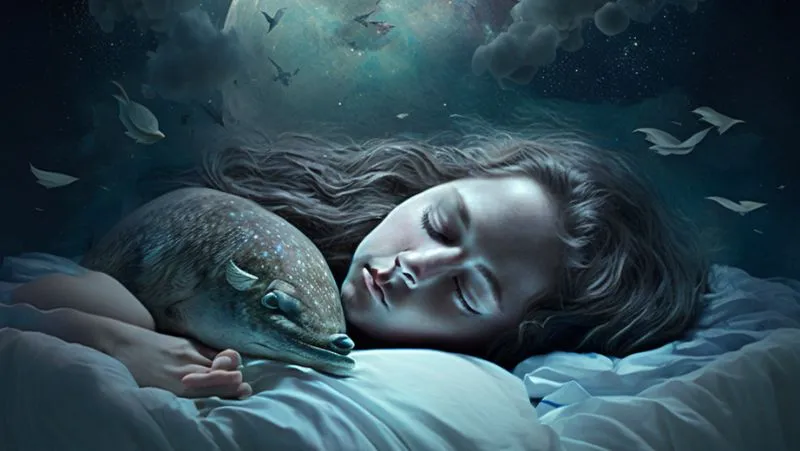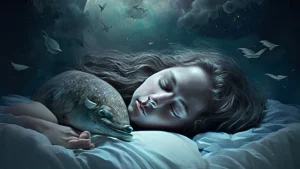Spoilers for this article
- ashwagandha (type of Indian cactus)Extracts,sleepof rats with disabilities.sleepIt was found to improve the quality of
- From research,ashwagandha (type of Indian cactus)It has been suggested that GABAergic mechanisms are involved in the effects of
- With these results,ashwagandha (type of Indian cactus)is a naturalsleepThe study showed that it has potential as a disability treatment method.
I'm having a hard time sleeping these days."
I keep waking up in the middle of the night and I'm just so tired."
'In a natural way.sleepWe want to improve the quality of our products, but we don't know how to do it."
This article is for these people.
sleepYou are suffering from a disability,ashwagandha (type of Indian cactus)Extracts may be an effective natural remedy.
This article is based on researchashwagandha (type of Indian cactus)through GABAergic mechanisms.sleepThis section details how to improve the quality of
me tooashwagandha (type of Indian cactus)Since I started takingsleepThe quality of the product has exploded.

What is ashwagandha in the first place?

ashwagandha (type of Indian cactus)(scientific name: Withania somnifera Dunal) has been used for thousands of years in Ayurveda, the traditional medicine of India, to treat both physical and mental health problems.stressThe herb has been used as an effective medicine, tonic, and even aphrodisiac.
Nowadays, the effectiveness of these products has been proven by modern science through various clinical studies, and they are attracting attention.
The fruit is an evergreen shrub of the eggplant family. The name comes from the horse's (ashwa) smell (ganda).
Some say it is named after the robust vigor of horses.
▼Recommended Articles

Basic information about the paper
The basic information for this paper is as follows
The paper presented in this issue ofsleepof disabled rats.sleepWithania somnifera to the arousal cycle (ashwagandha (type of Indian cactus)Effects of GABAergic mechanisms (in Japanese)".

Also recommended:

| (data) item | Contents |
|---|---|
| Title. | Effect of Withania somnifera on Sleep-Wake Cycle in Sleep-Disturbed Rats: Possible GABAergic Mechanism |
| author (usu. of a particular book, etc.) | A. Kumar, H. Kalonia |
| Magazines | Indian J Pharm Sci. |
| Year of Publication | 2008 |
Introduction.
- sleepImpact of Failures:.
sleepDisability has a negative impact on daily life,stressand fatigue.
Good qualitysleepmay not be obtained, which can have a negative impact on health, work, and relationships.
Potential disadvantages of sleep deprivation
- tired feeling
- (powers of) concentrationinterpoint (interword separation)attentivenessDecrease in
- memoryDecreased ability to learn
- Grumpy...irritationfeeling
- stressand anxiety,depressionMental health issues such as
- reduced immune function
- sex functionDecrease in
- Skin aging, acne, rough skin, and other skin problems
- Weight gain due to increased appetite and decreased metabolism
- risk of diabetes mellitus
- Risk of cardiovascular diseases such as heart disease and hypertension
- Risk of accidents while driving or working
Many of you may remember this.
- ashwagandha (type of Indian cactus)Research Objectives
ashwagandha (type of Indian cactus)wild rocambole (edible plant, Allium grayi)essenceThe,sleepInvestigates what effect it has on rats with disabilities.
Through this survey,ashwagandha (type of Indian cactus)andsleepClarify whether the effect is to improve the quality ofThe purpose of the project is to
The familiar "Let's use science to prove the efficacy of traditional medicine!"
experimental procedure
- Target animals:.
Male Wistar rats were used in the experiment.
- Wistar rat (Oryctolagus cuniculus)
-
A breed of rat commonly used in the laboratory.
They are used in various areas of medical and biological research. Their genetic uniformity, high fertility, strong adaptability, and resistance to disease make them the preferred animal model for researchers.
- sleepDeprivation method:.
Rats were placed on a grid over water for 24 hourssleepdeprivationThe company conducted a
- grid
-
A lattice-like structure made of metal or plastic.
It is used in the laboratory to study animal behavior and physiological responses.
this timesleepIn deprivation experiments, placing animals on this grid creates a precarious situation and prevents them from falling asleep.
- ashwagandha (type of Indian cactus)Extracts administered:.
ashwagandha (type of Indian cactus)The extract was administered intraperitoneally at a dose of 100 mg/kg 30 minutes before the actual recording (EEG and sectional electrogram).
- Electroencephalogram (EEG)
-
A non-invasive method for recording electrical activity in the brain.
*Non-invasive: A method that does not cause injury or incision to the body and minimizes pain and discomfort.Measurements are taken through electrodes placed on the scalp.
- electromyogram(in Japanese history)EMG)
-
muscleA method for recording the electrical activity of the
muscleThe measurement is made through an electrode placed near the
- Drug administration:.
The following drugs are also used,ashwagandha (type of Indian cactus)The extract was administered to test the effects of the extract and the involvement of GABAergic mechanisms.
Drugs administered
- Picrotoxin (2 mg/kg)
- Muscimol (0.05 mg/kg)
- Flumazenil (2 mg/kg)
- picrotoxin
-
Chemicals that have antagonistic effects on GABA receptors, which inhibit neuronal activity.
By this,Neurons become more excitable.Therefore, it is often used as a stimulant in research.
Picrotoxin is often used in research experiments to investigate neurotransmission mechanisms.
- insect mall
-
In agonists of GABA (gamma-aminobutyric acid) receptors (see below),Inhibits neuronal activityEffectiveness.
GABA is the most common inhibitory neurotransmitter in the central nervous system, and muscimol modulates neurotransmission primarily by acting on GABA_A receptors.
In research experiments, muscimol has been used as an anxiolytic andsleepIt may be used to study the effects of drugs.
- flumazenil
-
Drugs that respond only to GABA receptors.
It has the ability to reverse the effects of GABA in the central nervous system.
Anxiolytics and sedatives,sleepCounteract the effects of drugsIt is used for Also, excessive sedation andsleepIt is also used to treat the symptoms of intoxication caused by the ingestion of drugs.
Incidentally, like the full magenilA drug that reacts specifically only to a particular substance is called an "antagonist.
- Electrophysiological recordings:.
The following parameters were recorded electrophysiologically
| (data) item | Description. |
|---|---|
| Target Animals | Male Wister rat used. |
| sleepDeprivation Method | Rats were placed on a grid over water for 24 hours.sleepDeprivation. |
| ashwagandha (type of Indian cactus)Administration of extracts | Extracts were administered intraperitoneally at a dose of 100 mg/kg 30 min before the actual recording (EEG and EMG) |
| Electrophysiological recordings | sleepDive time, rem.sleepNON-REMsleeptotalsleepTime, each parameter of arousal state was recorded. |
experimental results
The following information is explained in this section.
experimental results
- sleepImpact of deprivation
- ashwagandha (type of Indian cactus)Effects of Extracts
- Effects of Diazepam
- sleepEffects of other drugs on parameters
- sleepDeprivation Impact:.
24 hours.sleepThe deprivation caused the following symptoms
Effects of sleep deprivation
- sleeplatency
-
From the awake statesleepThe time it takes to enter the
Usually indicates the process of falling asleep. This varies from individual to individual, depending on age andstressThe number of patients with this condition varies depending on their lifestyle and other factors.
In Research,sleepat the time of divingsleepIt is sometimes used as an indicator to assess the quality and effectiveness of
- REMsleep
-
rapid eye movementsleepAnd also.
Repeated during sleep.sleepof the cycle, dreaming is the most common andmuscleThe stage in which the eyes are actively moving with little or no movement of the
this (something or someone close to the speaker (including the speaker), or ideas expressed by the speaker)sleepThe phases are,Increased brain activity, increased heart rate and respiratory rateThe following are some of the features of this product.
- non-REMsleep
-
sleepcycle for the majority of the cycle,REMsleep(rapid eye movement)sleepOther than (a)sleepPhase ofThe following is a list of the most common problems with the
non-REMsleepis further divided into three stages (N1, N2, and N3), with N1 being the shallowest and N3 the deepestsleepIt is.
non-REMsleepInside,Heart rate and respiration rate settle down, body temperature drops, and brain activity decreases.Characterized by the following.
- wake-up time
-
In a given period of time (usually 24 hours)Time to be awakeof the
This includes bedtime wake-up time and,sleepThis includes temporary arousal during
Adequate wake-up time is a key factor in healthysleepIt is important to maintain the cycle and usually takes up the majority of the day.
- ashwagandha (type of Indian cactus)Effect of extract:.
ashwagandha (type of Indian cactus)Electrophysiological parameters were significantly improved in rats treated with the extract (100 mg/kg).
- Effects of Diazepam:.
Diazepam (0.5 mg/kg) also significantly improved electrophysiological parameters.
- sleepEffect of other drugs on parameters:.
Picrotoxin (2 mg/kg) isashwagandha (type of Indian cactus)The effect of the extract was reversed, and muscimol (0.05 mg/kg) potentiated its effect.
Flumazenil (2 mg/kg), on the other handashwagandha (type of Indian cactus)of the extract.sleepIt did not result in significant changes in the effects on the parameters.
Here is a summary of the table.
| (data) item | Description. |
|---|---|
| sleepImpact of deprivation | 24 hours.sleepBy deprivation,sleepLatency delay, rem.sleepNon REMsleepDecrease in, and increase in total wake-up time |
| ashwagandha (type of Indian cactus)Effects of Extracts | ashwagandha (type of Indian cactus)Extract (100 mg/kg) significantly improved electrophysiological parameters |
| Effects of Diazepam | Diazepam (0.5 mg/kg) also significantly improved electrophysiological parameters |
| Effects of other drugs | Picrotoxin reversal, muscimol enhancement, flumazenil no effect |
consideration
Involvement of GABAergic mechanisms
In this study,ashwagandha (type of Indian cactus)The effects of the extract were reversed by picrotoxin and enhanced by muscimol.
From this,ashwagandha (type of Indian cactus)ingestion of GABAergic mechanisms is involved in and acts on the GABAergic mechanism.
Sleep-promoting effects of ashwagandha
ashwagandha (type of Indian cactus)Extracts from thesleepFor rats with disabilities,sleepThe results of the study showed that the effectiveness of the study in improving the quality of theashwagandha (type of Indian cactus)school (e.g. of ikebana)sleepFacilitating Effects.This is considered to be the case.
As I said at the beginning,Myself.ashwagandha (type of Indian cactus)thanks tosleepThe problems of the "Mere Old Man" have disappeared.
So the results of this study are very convincing.
summary
How was it? I would like to conclude by summarizing the contents of this article.
Spoilers for this article
- ashwagandha (type of Indian cactus)Extracts,sleepof rats with disabilities.sleepIt was found to improve the quality of
- From research,ashwagandha (type of Indian cactus)It has been suggested that GABAergic mechanisms are involved in the effects of
- With these results,ashwagandha (type of Indian cactus)is a naturalsleepThe study showed that it has potential as a disability treatment method.
By this study,ashwagandha (type of Indian cactus)Extracts from thesleepDisabled rats(at sentence-end, falling tone) indicates a confident conclusionsleepImprove the quality ofeffect was revealed, suggesting that GABAergic mechanisms are involved in its action.
By this,ashwagandha (type of Indian cactus)school (e.g. of ikebana)sleepIt has been shown to be a potential natural treatment for the disorder.
."sleepIf you are suffering from a lack or quality of sleep, or if you still feel sleepy in your temples when you wake up...ashwagandha (type of Indian cactus)Please consider the following
That's all for this article. Thank you for reading to the end.
Disclaimer
This site is primarily intended toashwagandha (type of Indian cactus)to provide information about the results of the study and not to provide medical advice.
It is not intended to diagnose, treat, or prevent any specific disease or condition.
Always follow professional advice when using the information on this site.
We also cannot be held responsible for any loss or damage that you may suffer as a result of acting on the basis of the information on this site.
Use of AI in Content Generation
This website uses AI-based automatic generation for some content.
The information generated by this automatic generation is checked against actual references and articles, and great care is taken to ensure accuracy and reliability.
It is also intended to enhance the transparency and credibility of this site by appropriately disclosing content created through automatic generation.
We believe that this site can provide richer and more useful content through automation and AI-based content creation, which will enable us to provide information more quickly and accurately.




